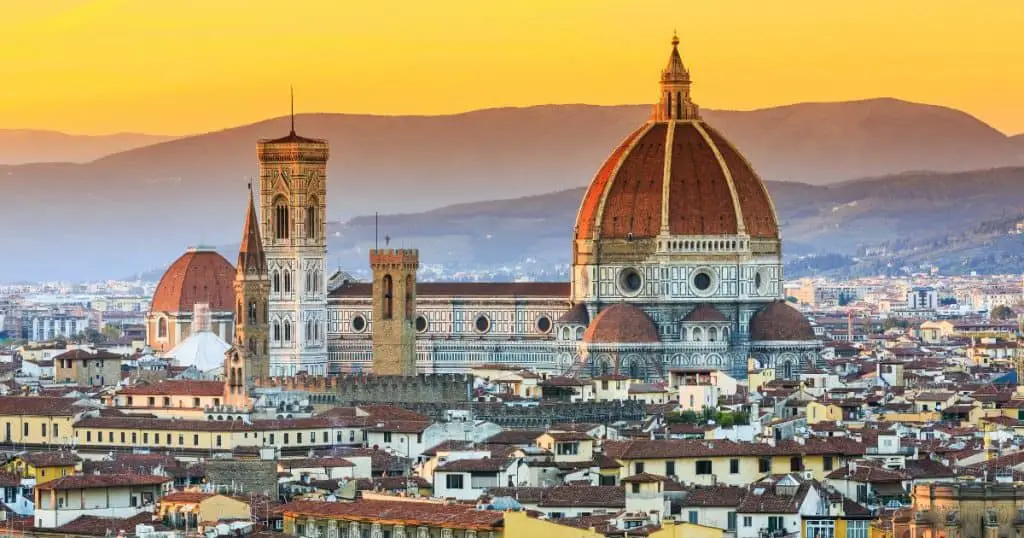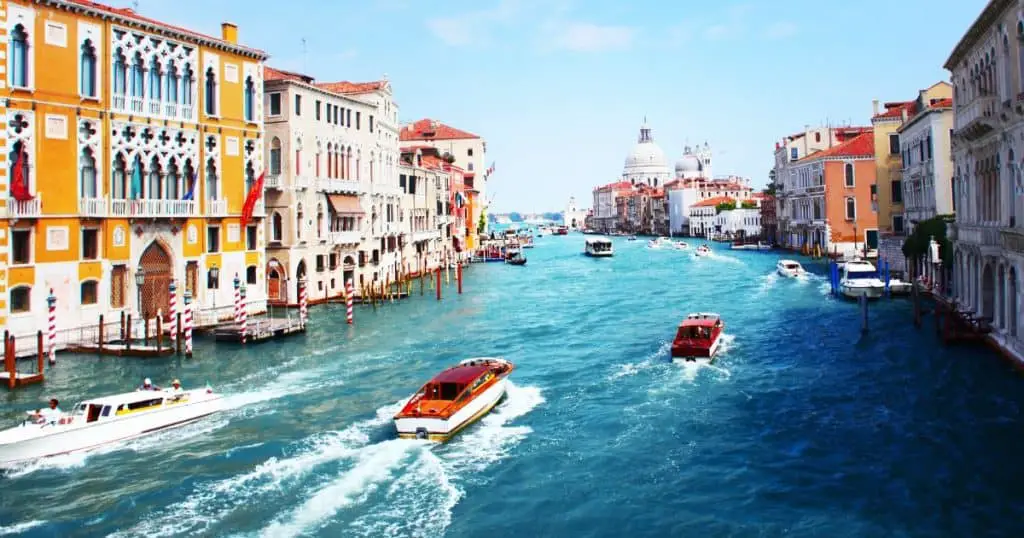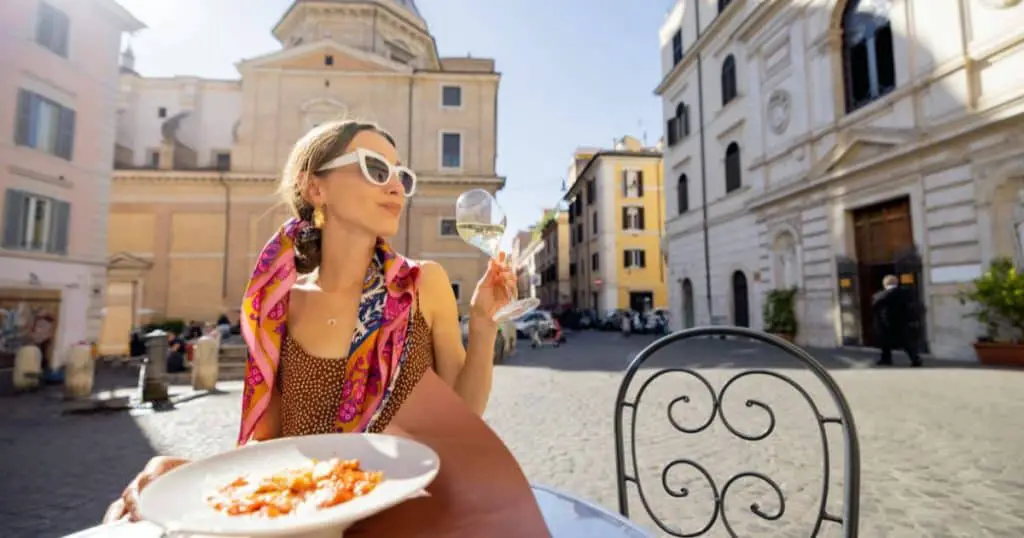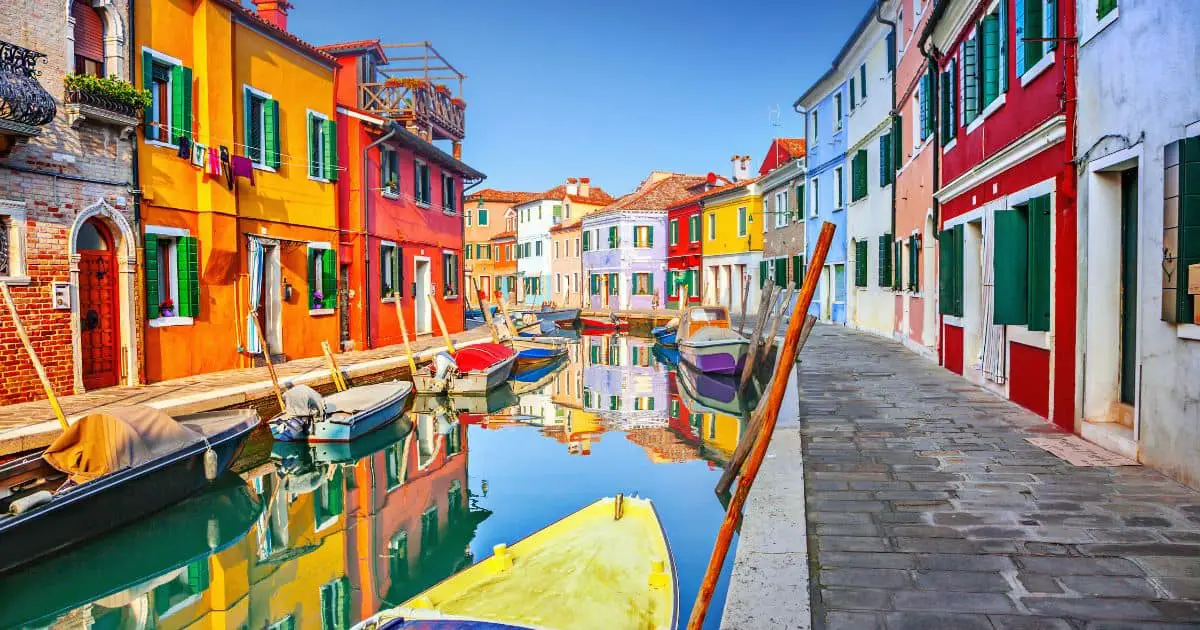Table of Contents
Traveling to Italy Tips and Tricks

You’re finally doing it – you’re traveling to Italy! Whether you’re a seasoned traveler or it’s your first time abroad, Italy is a destination that’s sure to leave you breathless. From stunning architecture and art to delicious cuisine, Italy has something for everyone. But before you pack your bags and head to the airport, there are a few tips and tricks you should know to make the most of your trip.
First and foremost, it’s important to do your research before you go. Italy has a rich history and culture, and taking the time to learn about it before you arrive will enhance your experience. From the ancient ruins of Rome to the canals of Venice, each city has its own unique story to tell. Additionally, familiarizing yourself with the language and customs can go a long way in making your trip more enjoyable. Don’t be afraid to practice a few basic phrases – locals will appreciate the effort!
Another important tip is to be prepared for the unexpected. Italy is a country of surprises, and sometimes things don’t go according to plan. Whether it’s a sudden rainstorm or a transportation delay, it’s important to be flexible and go with the flow. Embrace the Italian concept of “la dolce vita” – the sweet life – and enjoy the journey, no matter where it takes you.
Essential Tips Before You Go

You’re planning a trip to Italy! Whether it’s your first time or your tenth, there’s always something new to discover in this beautiful country. But before you go, there are a few things you should know to make your trip as smooth and enjoyable as possible.
Understanding Italian Culture
Before you arrive in Italy, it’s a good idea to familiarize yourself with the country’s culture. Italians are proud of their heritage and traditions, and they appreciate visitors who show respect for their customs. Learning a few basic Italian phrases can go a long way in making a good impression on the locals. Additionally, keep in mind that Italians tend to dress stylishly, so you may want to pack some nicer clothes for evenings out.
Preparing for Your Trip
Preparing for your trip to Italy involves more than just booking your flights and accommodations. If you’re traveling from outside the European Union, you may need to obtain a visa before you arrive. Check with your country’s embassy to see what requirements you need to meet. It’s also a good idea to purchase travel insurance to cover any unexpected medical or travel expenses.
Packing for Italy
When it comes to packing for Italy, comfort and practicality are key. Italy is a country that’s best explored on foot, so be sure to bring comfortable shoes for walking. You’ll also want to pack a bag that’s easy to carry around, as many Italian cities have narrow streets and limited parking. Consider packing a small, lightweight manual to help you navigate the country’s public transportation system.
Here are some additional tips to help you pack for your Italian vacation:
- Pack clothes that can be layered, as the weather can be unpredictable.
- Bring a reusable water bottle to fill up at the many public fountains.
- Pack a scarf or shawl to cover your shoulders when visiting religious sites.
- Don’t forget to bring adapters for your electronics, as Italy uses different outlets than many other countries.
By following these essential tips before you go, you’ll be well-prepared for your Italian adventure. Buon viaggio!
Getting Around Italy

Congratulations on planning your trip to Italy! You’re in for a treat. With so much to see and do, it can be overwhelming to figure out how to get around. Don’t worry, though – we’ve got you covered with some tips and tricks to make your transportation experience in Italy as smooth as possible.
Transportation Options
Italy has a great transportation system, and there are several options available to you. The most popular way to get around is by train. Trenitalia is the main train company in Italy, and they offer both regional and high-speed trains. If you’re traveling between major cities, the high-speed trains are the way to go. They’re fast, comfortable, and efficient.
If you’re looking for more flexibility, renting a car is a great option. Keep in mind that driving in Italy can be a bit chaotic, so be prepared for some aggressive drivers and tight spaces. However, having a car gives you the freedom to explore smaller towns and countryside areas that may not be accessible by train.
Navigating Public Transportation
If you’re staying in a major city, public transportation is a great way to get around. Most cities have a metro system, buses, and trams. You can purchase tickets at kiosks or tobacco shops, but be sure to validate your ticket before boarding. Failure to do so can result in a hefty fine.
One way to make navigating public transportation easier is to purchase skip-the-line tickets in advance. These tickets allow you to bypass long queues and get straight to the front of the line. They’re available for popular attractions like the Colosseum and the Vatican Museums.
Dealing with Transportation Strikes
Unfortunately, transportation strikes are a common occurrence in Italy. Train strikes are particularly common, and they can be a major inconvenience if you’re trying to travel between cities. The best way to deal with a strike is to be prepared. Have a backup plan in place, whether that’s renting a car or booking a flight.
If you’re already in Italy and a strike is announced, check with your hotel or the local tourist office for updates. They may be able to provide alternative transportation options or suggest other activities to do in the area.
In conclusion, getting around Italy can be an adventure in itself. With a little bit of preparation and flexibility, you’ll be able to navigate the transportation system like a pro. Whether you’re taking a train, driving a car, or hopping on a bus, enjoy the journey and take in all the sights and sounds that Italy has to offer.
Where to Stay – Traveling to Italy Tips and Tricks

When traveling to Italy, finding the right accommodation can make or break your trip. With so many options available, it can be overwhelming to decide where to stay. In this section, we’ll cover everything you need to know about choosing the right lodging for your Italian adventure.
Accommodation Options
Italy offers a wide range of accommodation options to suit every budget and preference. From luxury hotels to budget-friendly hostels, there’s something for everyone. If you’re looking for a more local experience, consider staying in an Airbnb. This can be a great way to stay in a local neighborhood and get a taste of Italian life.
If you’re traveling to Italy’s wine regions, consider staying in a vineyard or agriturismo. These are farmhouses that offer accommodation and often include meals made with local produce. It’s a great way to experience the local cuisine and culture.
Choosing the Right Location
When choosing where to stay in Italy, it’s important to consider the location. If you’re visiting big cities like Rome, Florence, or Venice, it’s best to stay in the city center. This will allow you to easily explore the city’s attractions and nightlife. If you’re looking for a more relaxed experience, consider staying in one of Italy’s beautiful lakeside towns.
If you’re interested in exploring Italy’s wine region, consider staying in Piedmont. This region is known for its Barolo and Barbaresco wines and is home to some of Italy’s best wineries. For a taste of southern Italy, consider staying in Puglia. This region is known for its beautiful beaches, olive groves, and delicious cuisine.
Understanding Tourist Tax
When staying in Italy, it’s important to understand the tourist tax. This tax is charged per person, per night, and varies depending on the location and type of accommodation. It’s important to factor this into your budget when planning your trip.
In conclusion, choosing the right accommodation in Italy can greatly enhance your travel experience. Consider your budget, preferences, and locations when making your decision. Whether you’re looking for luxury or a local experience, Italy has something for everyone. Don’t forget to factor in the tourist tax when planning your budget. Happy travels!
Eating and Drinking in Italy

Ah, Italy! The land of pasta, ragù, and gelato! If you’re a foodie, then you’re in for a treat. But before you start indulging in all the Italian delicacies, there are a few things you should know about eating and drinking in Italy.
Italian Cuisine
Italian cuisine is famous all over the world, and for a good reason. From pizza to pasta, Italian food is a celebration of flavors, textures, and aromas. But Italian cuisine is not just about pizza and pasta. Each region in Italy has its own unique cuisine, and you’ll find a variety of dishes that are specific to each region.
Dining Out Tips
Dining out in Italy is an experience in itself. Italians take their food seriously, and so should you. Here are a few tips to keep in mind when dining out in Italy:
- Tipping is not expected in Italy, but if you receive exceptional service, you can leave a small tip.
- Italians eat dinner late, usually around 8-9 pm. So, don’t be surprised if you find most restaurants empty before that time.
- Most restaurants in Italy serve bottled water, and it’s not common to ask for tap water. But don’t worry; the tap water in Italy is safe to drink.
Navigating Menus
Italian menus can be overwhelming, especially if you’re not familiar with the language. But don’t worry; here are a few tips to help you navigate the menus:
- Start with the antipasti, which is the appetizer.
- Primi piatti is the first course, which usually consist of pasta, risotto, or soup.
- Secondi piatti are the second courses, which usually consist of meat or fish.
- Contorni is a side dish, which you can order separately.
- Dolci are the desserts, which are a must-try in Italy.
Eating Late
As mentioned earlier, Italians eat dinner late. But what if you’re hungry before that? Here are a few options:
- You can grab a quick bite at a bar. In Italy, bars serve coffee, pastries, and sandwiches.
- You can also visit a pizzeria, which serves pizza by the slice or whole pie.
And there you have it, a few tips to help you navigate the world of Italian cuisine. Now, go ahead and indulge in all the delicious food that Italy has to offer! And don’t forget to pay with your Mastercard to save on currency conversion fees. Buon appetito!
Sightseeing in Italy

Italy is a country that is filled with beautiful sights and incredible experiences. From the art in Rome to the canals in Venice, there is something for everyone to explore and enjoy. However, with so many tourist attractions, it can be challenging to know how to make the most of your sightseeing experience. Here are some tips to help you navigate your way through Italy’s must-see sights.
Tourist Attractions
Italy is home to some of the world’s most famous tourist attractions, including the Vatican, the Colosseum, and the Cinque Terre. While it’s essential to visit these places, it’s also important to explore some of the lesser-known sights. Verona, for example, is a beautiful city that is often overlooked by tourists. Take the time to research some of the lesser-known sights in Italy, and you may be surprised by what you find.
Avoiding Crowds
The crowds in Italy can be overwhelming, especially during peak tourist season. To avoid the crowds, try to visit popular sights early in the morning or late in the afternoon. Another option is to visit during the off-season when there are fewer tourists. You can also consider visiting some of the lesser-known sights, which are often less crowded.
Understanding Opening Times
Many tourist attractions in Italy have limited opening times, so it’s essential to plan your sightseeing accordingly. Some sights are closed on Mondays, while others are closed on Sundays. It’s also important to note that some sights have limited hours during the winter months. Be sure to check the opening times of the sights you want to visit before you go.
Guided Tours
Guided tours are a great way to explore Italy’s sights, especially if you’re short on time or want to learn more about the history and culture of the country. There are many different types of guided tours available, from walking tours to food tours. Be sure to research the different options available and choose a tour that suits your interests and budget.
In conclusion, Italy is a country that is filled with incredible sights and experiences. By following these tips, you can make the most of your sightseeing experience and create memories that will last a lifetime. Enjoy your travels!
Miscellaneous Tips
When traveling to Italy, there are a few miscellaneous tips that can make your trip smoother and more enjoyable. In this section, we’ll cover money matters, weather and seasons, and other travel tips that will help you make the most of your time in Italy.
Money Matters
Cash is still king in Italy, so it’s a good idea to have some euros on hand. ATMs are widely available, but be aware that some may charge a fee for withdrawals. Check with your bank before you leave to see if they have any partner banks in Italy to avoid extra fees. Credit cards are widely accepted, but it’s always a good idea to have cash on hand for smaller purchases.
Weather and Seasons
Italy has a Mediterranean climate, which means hot summers and mild winters. If you’re traveling in the summer, be prepared for extreme heat and make sure to stay hydrated. In the winter, the weather can be unpredictable, so be sure to pack layers. Fall is a great time to visit Italy, as the temperatures are mild and the crowds are smaller.
Other Travel Tips
Italians take queuing seriously, so be prepared to wait your turn in line. If you see a sign that says “riposino,” it means that the shop or restaurant is closed for a midday break. Many shops and restaurants close for a few hours in the afternoon, so plan your day accordingly.
Air conditioning is not as common in Italy as it is in other countries, so be prepared for warmer indoor temperatures. Water fountains are widely available throughout Italy, so bring a reusable water bottle to save money and reduce waste. And of course, don’t forget to follow COVID-19 guidelines and restrictions while traveling in Italy.
In conclusion, these miscellaneous tips will help you make the most of your trip to Italy. From understanding the local customs to being prepared for the weather, these tips will help you have a smooth and enjoyable experience.
FAQs
Are you planning a trip to Italy? Here are some frequently asked questions to help you prepare for your adventure!
What is the best time of year to visit Italy?
The best time to visit Italy is during the shoulder seasons of spring (April to June) and fall (September to November). The weather is mild, the crowds are smaller, and the prices are lower. However, if you want to experience the summer festivals and enjoy the beaches, then July and August are the best months to visit.
Do I need a visa to visit Italy?
If you are a citizen of the United States or Canada, you do not need a visa for stays up to 90 days. However, you will need a valid passport that does not expire for at least six months after your planned departure date.
What is the currency in Italy?
The currency in Italy is the Euro. You can exchange money at banks, exchange offices, or use ATMs. Credit cards are widely accepted, but it is recommended to have some cash on hand for smaller purchases.
What is tipping etiquette in Italy?
Tipping is not expected in Italy, but it is appreciated for exceptional service. A service charge is usually included in the bill at restaurants, but you can leave a few extra euros if you had a great experience. It is also common to round up the bill at bars and cafes.
How do I get around Italy?
Italy has an extensive public transportation system, including trains, buses, and metros. The train is the most popular and efficient way to travel between cities, while buses are better for shorter trips. Taxis are available, but they can be expensive. It is also recommended to rent a car if you plan on exploring the countryside.
What should I wear in Italy?
Italians value fashion and style, so it is recommended to dress neatly and avoid wearing athletic or casual clothing. For women, dresses, skirts, and blouses are appropriate, while men should wear dress shirts and pants. Comfortable shoes are also a must, as you will be doing a lot of walking.
What are some cultural customs in Italy?
Italians are known for their hospitality and love of food. It is customary to greet people with a kiss on both cheeks, and to always say “please” and “thank you.” It is also important to dress appropriately when visiting churches and religious sites, and to not touch any artwork or artifacts.
There you have it! These are just a few of the most frequently asked questions about traveling to Italy. Now that you’re armed with this information, you’re ready to plan your trip and enjoy all that Italy has to offer!
Before You Go
You now have all the tips and tricks you need to travel to Italy like a pro! With these insights, you’ll be able to enjoy all that Italy has to offer without any hiccups.
Here are some key takeaways from this article:
- Always carry cash with you, especially when traveling to smaller towns or rural areas.
- It’s important to dress appropriately when visiting churches and other religious sites in Italy.
- Be prepared for strikes and delays when using public transportation.
- Don’t be afraid to try new foods and drinks, but be aware of the cultural norms around eating and drinking in Italy.
- Take advantage of guided tours and local experts to get the most out of your trip.
Remember, traveling to Italy is all about immersing yourself in the culture, trying new things, and having fun. Don’t stress too much about the details, and enjoy the ride!
We hope this article has been helpful in preparing you for your trip to Italy. If you have any other tips or tricks to share, please leave them in the comments below. Bon voyage!






Leave a Reply